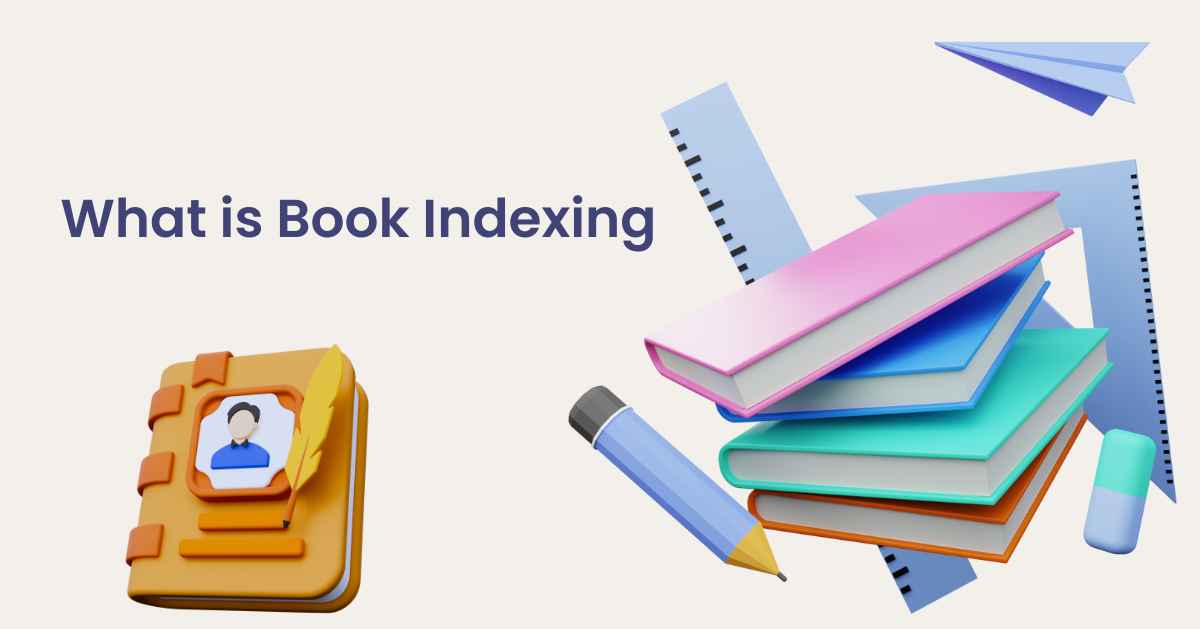Book Indexing: Why You Need It, How to Create

What is Book Indexing? Creating an index for a book involves crafting a guide at the back. This guide serves as a roadmap indicating where readers can locate topics within the book. It is important as it allows readers to grasp the book’s scope easily by referring to the index.
While some writers and publishers resort to software tools like Word or LaTeX for indexing, these automated methods often lack precision. Many seasoned authors argue that the human touch is indispensable in developing a quality index in fiction where the index should accurately mirror the storyline and themes of the book.
The significance of an index is heightened in nonfiction works such as textbooks or dictionaries. It assists readers in locating desired information by listing topics and corresponding page numbers. Opting for indexing services can ensure that all pertinent information is accurately cataloged in the index.
Rules for Writing a Book Index
Identify Key Terms: Determine the most important terms, concepts, names, and topics in your book that readers might want to find quickly.
Use Consistent Terminology: Be consistent with the terms and phrases used throughout your book. Use the exact wording in the index you used in the main text.
Organize Alphabetically: Arrange entries alphabetically. This makes it easier for readers to locate specific topics without needing to search the entire index.
Include Subentries: Use subentries to provide more specific details under main entries. For example, under “Marketing,” you might have subentries like “digital marketing” or “social media marketing.”
Provide Page References: Include page numbers where each term or topic can be found in the book. This helps readers quickly navigate to the relevant pages.
Avoid Over-Indexing: Be selective about what you include in the index. Focus on key terms and topics central to the book’s content.
Consider Reader’s Perspective: Think about how readers will look for information. Use terms and phrases that readers will likely use when searching for specific content.
Review and Revise: After creating the index, review it to ensure completeness and accuracy. Make revisions as needed to improve clarity and usability.
Consult Guidelines: Refer to indexing guidelines or standards relevant to your book’s genre or field to ensure your index meets industry standards.
Why Use a Book Index?
A book index serves three main purposes:
Helps Readers Find Information Easily: An index lets readers quickly locate specific information without searching the entire book. They can jump directly to the page they need.
Provides a Quick Overview: An index is handy for novels and nonfiction books. It gives readers a preview of what the book covers, helping them decide if it meets their needs before buying it.
Showcases Book Content: The index highlights all the topics and information covered in reference books like encyclopedias. The more useful and informative the book, the more likely readers will buy it.
Steps to Write a Book Index
Write a book index is easy if you follow these 5 steps:
Read the Book: Thoroughly understand the book’s purpose and content to create a meaningful index that resonates with readers.
Mark Sections: Divide the book into sections if it’s not already divided. Keep the author’s divisions if they exist.
Create Section Headers: Write clear headers for each section on your index page. Ensure they accurately represent the content covered in each section and maintain a logical flow.
List Content Under Headers: Under each header, list key sub-topics, points, names, and events covered in that section.
Edit and Finalize: Review and edit your index list. Select the most relevant information for the final index and arrange it in a readable format suitable for publishing.
Conclusion
Book indexing helps readers find information easily. Understanding the book’s purpose is key. Divide the book into sections and list important details under each section. This creates a clear index that improves readers’ use of the book.
FAQs
Indexing in books is creating an alphabetical list of key terms, names, and topics mentioned in the book, along with their page numbers, to help readers easily locate information.
A book indexer organizes and creates an index for a book, identifying important concepts, terms, and names mentioned in the text and compiling them into a structured list with page references.
The stages typically include reading the manuscript, identifying key terms, concepts, and names, organizing them into categories, assigning appropriate page numbers, and formatting the index according to publishing guidelines.
Salaries for book indexers can vary widely depending on experience, location, and the project scope. However, freelance book indexers can earn between $15 to $50 per hour, while full-time indexers might earn annual salaries ranging from $30,000 to $70,000.
An indexing job involves creating indexes for various documents, books, or digital content, ensuring readers can quickly find relevant information based on keywords or topics.






